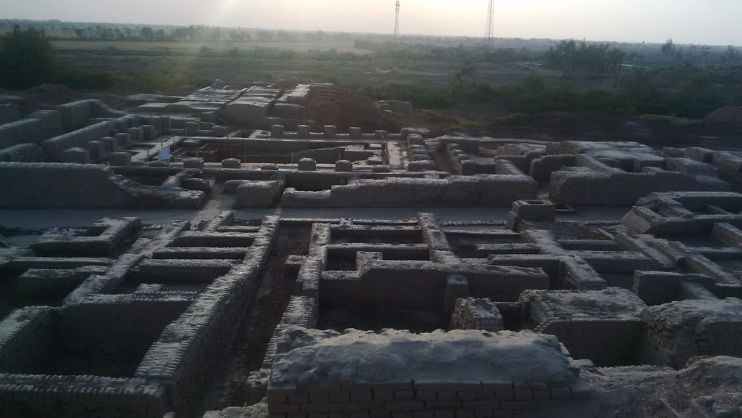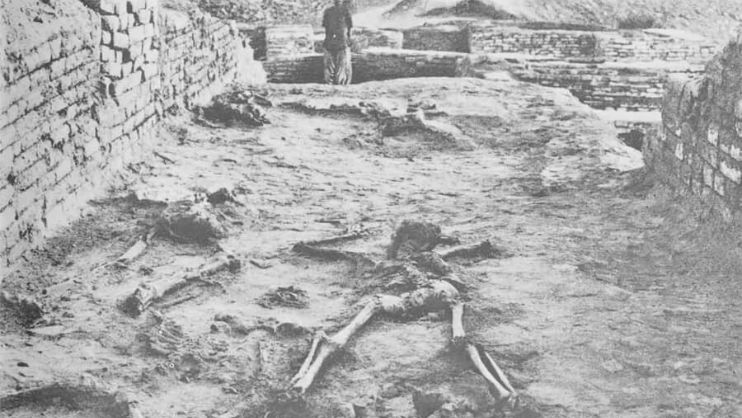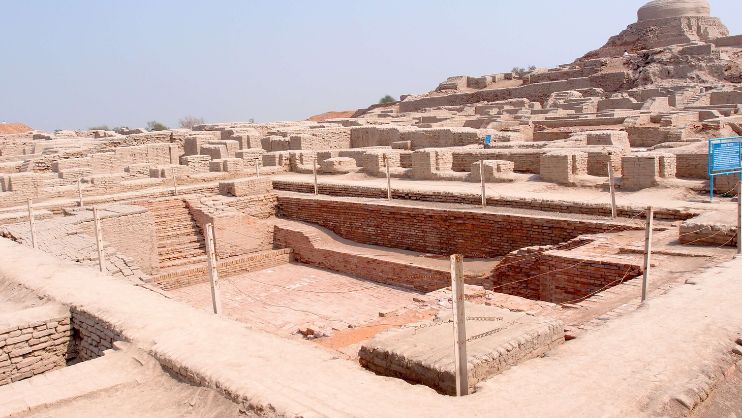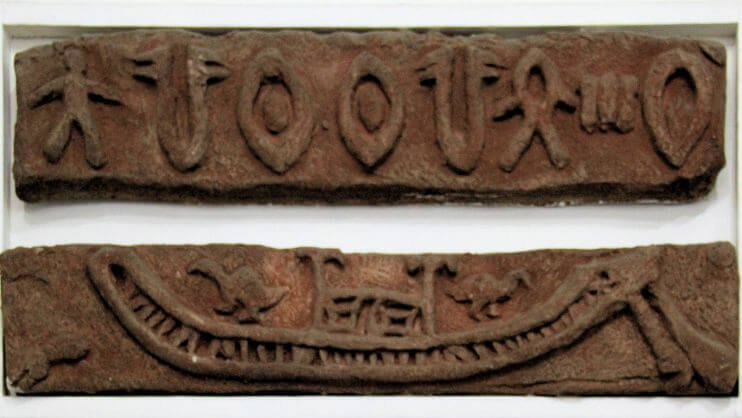Mohenjo-Daro, located in the Indus Valley in present-day Pakistan, was once a thriving city, with a sophisticated infrastructure that included a complex sewage system, brick buildings, and public baths. However, the city’s decline remains shrouded in mystery. While archaeologists have uncovered many fascinating details about the city’s daily life, the ultimate cause of its demise remains a topic of debate.

One of the most intriguing discoveries made in Mohenjo-Daro was a set of skeletons found on a street. The remains belonged to a child and two adults who appeared to have died holding hands. The emotional impact of the discovery is undeniable. But what is perhaps even more striking is the fact that the skeletons were found to be highly radioactive, similar to those found after the nuclear bombings of Hiroshima and Nagasaki.

The presence of radioactivity has led to much speculation about what might have caused the destruction of Mohenjo-Daro. Some have suggested that the city was destroyed by an ancient nuclear weapon, while others have argued that a natural disaster, such as a meteoric strike or volcanic eruption, may have been responsible.

Despite decades of research, no definitive answer has been found. There is little evidence of a fierce battle or conflict, and no evidence of a large-scale volcanic eruption or meteoric strike. It is possible that a natural disaster occurred that did not leave any visible traces, or that some form of weapon or technology was used that has not yet been discovered.

While the cause of Mohenjo-Daro’s destruction may never be fully understood, the city’s remains continue to offer tantalizing clues about the past. The streets and buildings that have been excavated provide a glimpse into the daily lives of the city’s inhabitants, revealing a sophisticated and well-organized society. The city’s decline and eventual destruction may remain a mystery, but the insights gained from the excavation of its remains are invaluable.

As we continue to explore the world’s ancient civilizations, the mysteries of the past remain as compelling as ever. Mohenjo-Daro may be gone, but its legacy lives on in the ruins that remain. Perhaps one day, we will uncover the truth behind its mysterious and radiant destruction.

| Artifacts collect from the ruins of Mohejo-Daro | Arifacts collect from the ruins of Mohejo-Daro |
| Lost civilization | Mohenjo-Daro ancient ruins |
| Artifacts collected | Mohenjo-Daro civilization |
| History | Mohenjo-Daro mystery |
| Architecture | Mohenjo-Daro ruins |
| City | Mohenjo-Daro Indus Valley |

What is the significance of the discovery of radioactive skeletons in Mohenjo-Daro?
The discovery of radioactive skeletons in Mohenjo-Daro is significant because it raises questions about the cause of the city’s destruction. The similarity between the radioactivity levels in these skeletons and those found after the nuclear bombings of Hiroshima and Nagasaki has led to speculation about the use of ancient nuclear weapons or a natural disaster involving radiation.
What are some theories proposed to explain the destruction of Mohenjo-Daro?
Several theories have been proposed to explain the destruction of Mohenjo-Daro. These include the possibility of ancient nuclear warfare, a natural disaster like a meteoric strike or volcanic eruption, or the use of some unknown weapon or technology. However, none of these theories have been definitively proven.
What evidence suggests that the destruction of Mohenjo-Daro was violent?
The presence of scattered skeletons, including those of a child and two adults found holding hands on the streets, indicates a violent end for the people of Mohenjo-Daro. The skeletons were flattened and found within layers of rubble, ash, and debris, suggesting a sudden and devastating event.
Why is the decline and destruction of Mohenjo-Daro still a mystery?
The decline and destruction of Mohenjo-Daro remain a mystery because no conclusive evidence has been found to support any particular theory. Despite extensive research and excavation, there is no clear indication of a large-scale conflict, volcanic eruption, or meteoric impact. The cause may have been a natural disaster that left no visible traces or involved an unknown form of weapon or technology yet to be discovered.
What insights have been gained from the excavation of Mohenjo-Daro’s remains?
Excavations of Mohenjo-Daro have provided valuable insights into the daily lives of its inhabitants and the city’s sophisticated infrastructure. The well-organized street layouts and buildings suggest ancient urban planning, while the complex sewage system, brick buildings, and public baths indicate a developed civilization. Despite the mystery surrounding its destruction, the remains of Mohenjo-Daro offer valuable glimpses into the past.